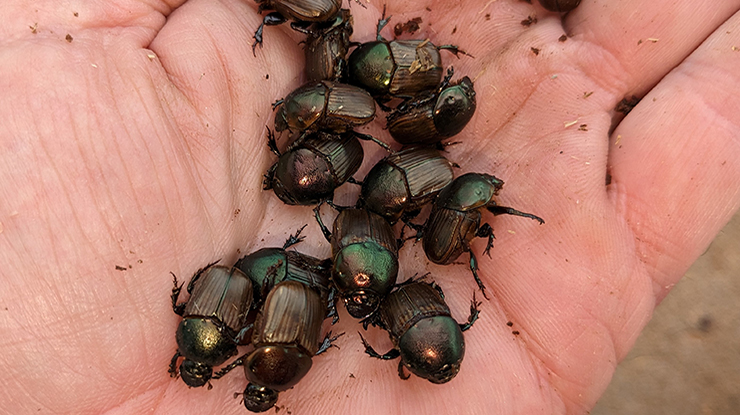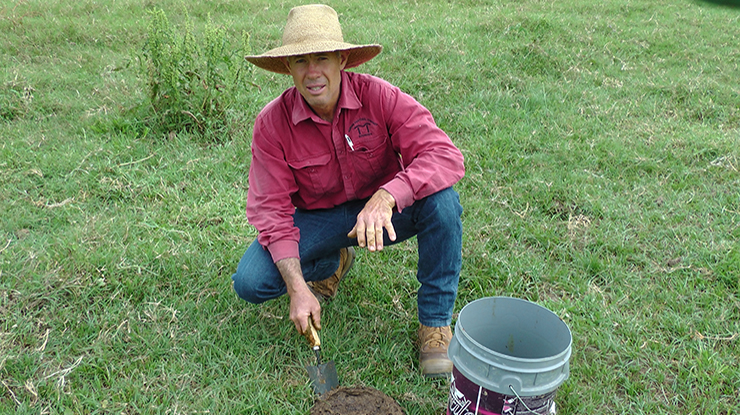 Onitis alexis dung beetles. Image by Russ Barrow
Onitis alexis dung beetles. Image by Russ Barrow
Key points:
- Recent flooding has led to the death of billions of dung beetles across southern Australia – researchers are hoping to work with producers and local groups to boost restocking efforts
- Producers can help by assessing their pastures and supporting the surviving dung beetles
- Expert advice on dung beetle recovery will be available through upcoming Ecoinsects webinars.
As flood waters recede and pastures dry out, producers across Australia will be taking stock of their losses. However, often some of the important contributors to our farms are the ones we don’t always notice – like dung beetles.
The impact
The recent flooding of low-lying pastures across southern Australia has led to the death of billions of dung beetles. Warm weather and wet soil make for great pasture – however, without dung beetles to clear manure, the impact on pastures and the wider environment will be substantial. With flies, internal parasites and dung affecting new growth, pasture improvement and maintaining healthy waterways will be major challenges for producers this year.
Dr Russ Barrow, leading researcher on the Dung Beetle Ecosystem Engineers project, said that all dung beetles, regardless of their stage in the life cycle, are set to be impacted.
“Unfortunately, this flooding will be too much for adult beetles, larvae, even eggs. The losses will be huge, and perhaps not really felt until next season,” he said.
Dr Barrow said recent monitoring across NSW, SA and Victoria has helped identify the losses and how they will affect producers.
“Producers in these areas will see reduced numbers of autumn, winter or spring active species emerging later this year.”
How to help

Ecoinsects Northern Manager, Rob Young, undertaking an assessment for dung beetles
Dr Barrow said researchers, producers and local groups can work together to restock our smallest livestock.
“Ideally, our response should be a collaborative and regional program of restocking of all the key species back into these areas over the next year,” he said.
“However, it’s not cost effective or practical for each producer to individually manage the level of restocking that will be needed – so we’re calling on local Landcare and grower groups to organise coordinated programs.”
Steps producers can take are:
- Monitor – Get out with a shovel and a bucket of water and check what is still around. Find a target manure pile and scoop the whole pad (and a few centimeters of soil) into a bucket of water. The beetles soon float to the top and can be scooped out. Use the handy regional guides to identify what dung beetle species







